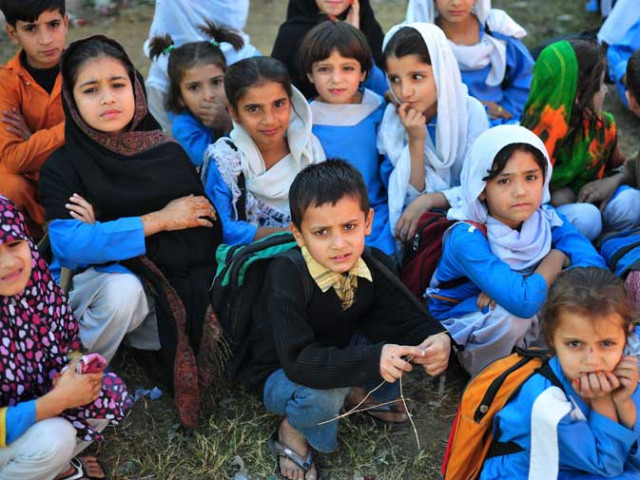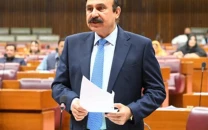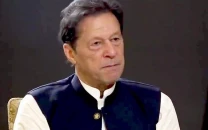UN report: Pakistan’s education 50 years behind world
Pakistan has the largest number of children out of primary schools

It noted that in 2000, textbooks introduced in the Federally Administered Tribal Areas was marginal towards a particular sect which bred contempt and ultimately a full blown conflict with violent confrontations between the two major sects in 2004-05 with subsequent curfews shutting down schools there for almost a year. PHOTO: FILE
Pakistan, though, is not alone in missing its education targets with much of the world set to overshoot its deadline by more than half a century, the United Nations Global Education Monitoring Report 2016 said. It added that the 40 per cent of the world’s students are being taught in a language that is not their mother tongue.
World leaders agreed last year that by 2030 all girls and boys should be able to complete free quality primary and secondary education, but chronic under-funding is holding back progress, the report said. According to the report, Pakistan is struggling with its large out-of-school population including 5.6 million children out of primary schools – the most absolute number of children out of school anywhere in the world, though Liberia tops the ranking for the worst access to primary schools with 62 per cent proportion of children missing out on primary school.

A further 5.5 million children are out of secondary schools (48 per cent of lower secondary school age children). Pakistan also has a staggering 10.4 million adolescents out of upper secondary school.
There is also a wide gulf between school completion rate and education attainment between the rich and poor; urban and rural based and between boys and girls. Poor rural males have literacy rate of 64 per cent, but their female counterparts pale in comparison with 14 per cent.
The ASER 2014 survey, on which parts of the UN report are based, found that in rural Pakistan, the proportion of students in grade 6 who could read a grade 2 level story in local languages including Urdu, Sindhi or Pashto was 65 per cent while among all children aged 10 (the theoretical grade 6 age) the share was much lower at 31 per cent.
Many 10-year-olds had never been to school, had already left (often because of not benefiting from the experience) or were in a lower grade and had not yet developed reading skills. While 89 per cent of grade 10 students could read very simple text, only 64 per cent of sampled 14-year-olds could do so, a difference of 25 percentage points.
ICT, which has quickly become essential for daily life and work in most countries, is still to catch on in Pakistan, partly due to lower literacy levels. A survey of 32 mostly middle income countries found that, on average in 2014 44 per cent of households used the internet at least occasionally (or had a smartphone) but in Pakistan it stood at eight per cent.
One factor for this has been fewer resources allocated to education, with Pakistan committing only 11.3 per cent of total government expenditure to the sector as opposed to the recommended minimum benchmark of 15 per cent.
Conflict was another aspect affecting education in the country. Between 2009 and 2012, the report said 1,000 or more education-related attacks took place in Pakistan.
The report also pointed towards issues with curriculum, which have at times in Pakistan sparked violent conflict.
It noted that in 2000, textbooks introduced in the Federally Administered Tribal Areas was marginal towards a particular sect which bred contempt and ultimately a full blown conflict with violent confrontations between the two major sects in 2004-05 with subsequent curfews shutting down schools there for almost a year.
Published in The Express Tribune, September 7th, 2016.


















COMMENTS
Comments are moderated and generally will be posted if they are on-topic and not abusive.
For more information, please see our Comments FAQ